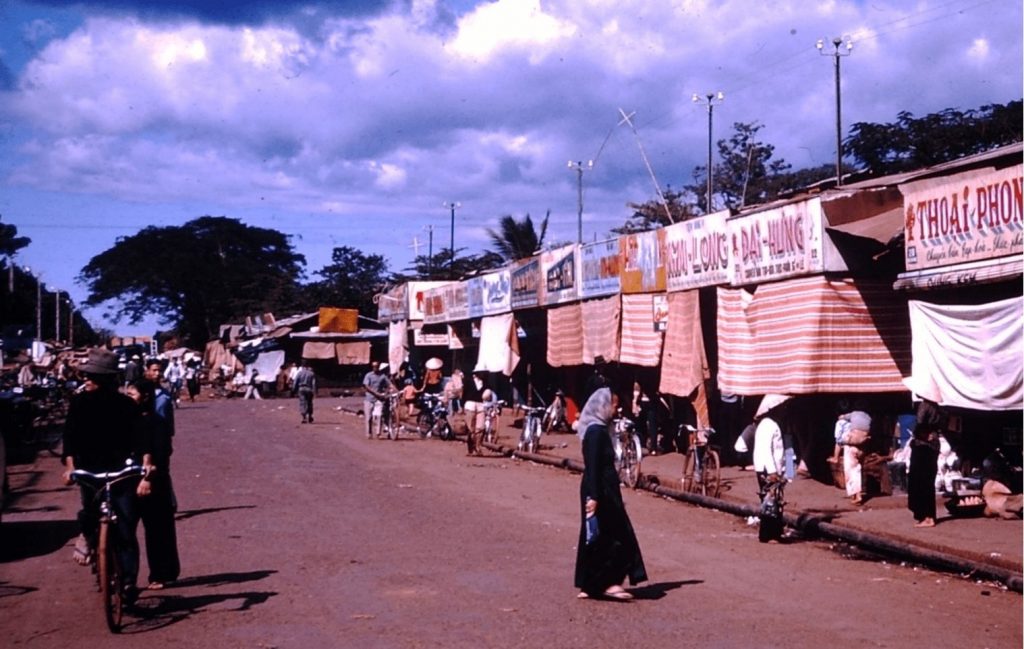
I began my tour in Vietnam 50 years ago this year (2021). It was late in 1971, November specifically, when I arrived in country. I returned home in November 1972, and with the peace accord being signed in January 1973, my tour spanned nearly all of the last year of the war. I was assigned to a MACV team (Military Assistance Command Vietnam) in Darlac Province, in the town of Ban Me Thuot. Darlac Province is in the central highlands area of Vietnam and its western side bordered Cambodia. If you look on a google map today, the names appear as “Dak Lak” Province and “Buon Ma Thuot”.
The MACV team consisted of both military and civilian advisors to the South Vietnamese. The civilian side included advisors regarding various segments of local government operations. My role was artillery advisor to South Vietnamese units operating in the province. That changed after a few weeks as enemy activity and engagement in Darlac had diminished and remained low for most of my tour. So, I was reassigned to the Province Operations Staff.
The beginning of my tour was apparently near the end of new MACV assignment tours in Vietnam, as within a few months of my arrival, when a team member completed their tour and departed, no replacement ever arrived. Our initial team was a staff of around 40-50. By the time I left in November 1972 we had less than 10. Of course, this was part of the continuing drawdown that President Nixon had initiated several years earlier. Our Province Commander, a Colonel, completed his tour a few months after I arrived, but was replaced by a LT Colonel.
In Province Operations, we worked with South Vietnamese counterparts to help plan, coordinate, and report on military operations in the Province, both US and ARVN (Army of the Republic of Vietnam – acronym for the South Vietnam ground forces). However, at that time, there were no active US combat units in the province, only ARVN units. Staff roles overlapped, with everyone helping with whatever was required, especially more so as the year progressed and there were fewer of us. We made frequent trips to various villages and to the 4-district headquarters in Darlac. Each district had a small American military advisory team working directly with South Vietnamese units operating in the district.
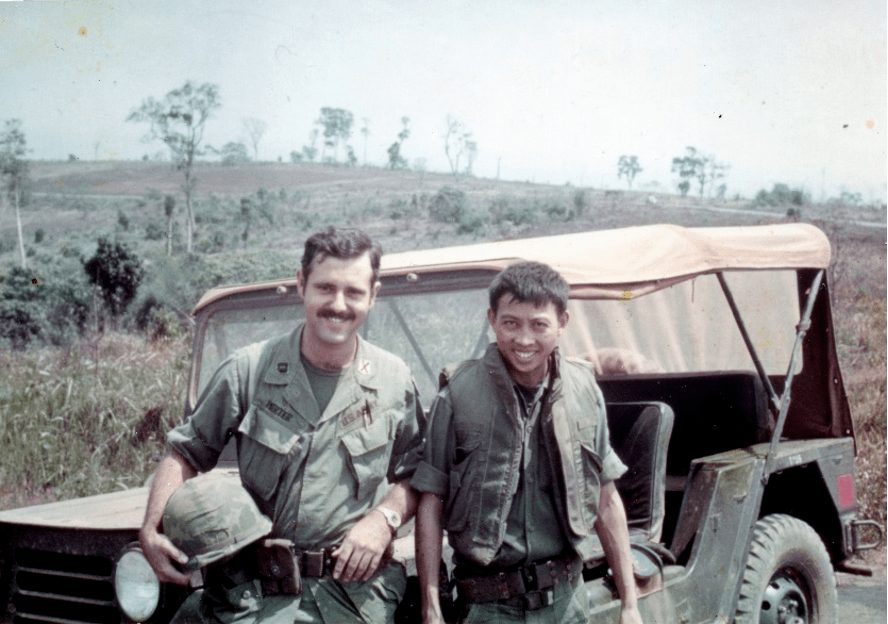
One of our other frequent activities was coordinating and flying on intelligence gathering and observation missions on Huey UH1 helicopters. Darlac Province physically spanned nearly the width of the country, coming within approximately 20 miles of the South China Sea shoreline on its eastern side and bordering Cambodia on the west. Yet, all our intel missions focused to the west and northwest of Ban Me Thuot, all the way to the Cambodian border. This area had been deemed by both US and ARVN highest level intelligence staff as an optimal and likely invasion corridor if the NVA (North Vietnamese Army, also referred to as PAVN – People’s Army of Vietnam) were to mount a major offensive into South Vietnam. It was a high priority to ensure there was advance knowledge of any activity to provide early warning and plenty of time for countermeasure preparations. However, we never picked up any visuals or other intel indicating any significant NVA or VC (VietCong – communist guerrilla forces) activity during our surveillance flights of that area.
As I mentioned earlier, the level of enemy activity and engagement in Darlac was very low during 1972. Even during the NVA “Easter Offensive” in April 1972, the NVA activity in the central highlands focused on areas much further north such as Kontum and didn’t reach Darlac. The year continued with minimal enemy activity. Until October.
The Kissinger peace talks were in high gear in the fall of 1972. This apparently triggered NVA and VC offensives in many areas of Vietnam, presumably to improve their negotiating leverage regarding a peace accord. By that time, in Darlac, only one of the 4 districts still had an American MACV team and that happened to be the one where enemy activity picked up. The “team” still in the district was one American Officer, a Major. As activity intensified, he requested additional help from Province Headquarters. I volunteered and spent about 3 days in the district with him, helping advise local ARVN units and coordinating US air support. Eventually, ARVN forces prevailed, and the enemy withdrew from the area. I then returned to Province Headquarters and it was only a week or so later that I completed my tour and headed home.
A year and a half later, in 1974, my service obligation was complete, and I decided to join the civilian world and enrolled in a graduate program at Virginia Tech. By early 1975, I was very focused and engaged in my graduate studies. Vietnam was a distant memory, with little occasion or desire to recollect. But then in late March, my attention was drawn to news reports of the major NVA invasion into South Vietnam. I remember being stunned and dismayed by the news. What happened to the 1973 peace accord? Surely South Vietnam will prevail? And then, as it progressed, and the country fell – how did it happen so quickly? At the time, I was too consumed with graduate studies to focus on the details of what happened. It was not until many years later that I did some research on the downfall and stumbled upon a stunning revelation.
Historical accounts indicate that in late December 1974, North Vietnam broke the 1973 peace accord by initiating an offensive in Phuoc Long Province, which is about 90 miles north of Saigon. By January 6, 1975, they had taken the province. This was followed by several months of relative quiet with no additional offensive activity, presumably while North Vietnam further strategized on its next move.
That next move came in early March with an NVA invasion into Darlac Province. Then on March 10 the NVA began a direct assault on Ban Me Thuot. “WHAT!!??”
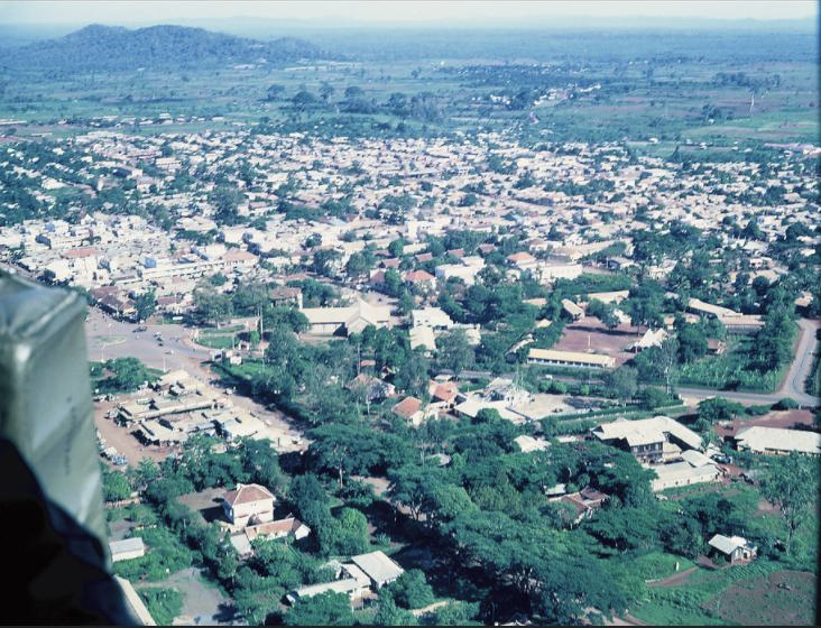
That was my reaction when I discovered this. The offensive thrust was via the same strategic west-northwest corridor we had so diligently surveilled for enemy activity/intelligence in 1972, because it was deemed a likely invasion path. My thought was – “Did South Vietnam not continue surveillance and intelligence gathering on this area, given its strategic importance as a likely invasion route?” I found that apparently, they did, but did not act on the intelligence:
Per Military.wikia.org, re The Battle of Ban Me Thuot:
“In the days leading up to the assault on Ban Me Thuot, ARVN Major General Pham Van Phu repeatedly ignored intelligence which showed the presence of several North Vietnamese combat divisions around the district.”
“In late February, North Vietnamese artillery shells began to rain down on Pleiku, which convinced General Phu that the North Vietnamese would attack Pleiku instead of Ban Me Thuot. Indeed, the movements around Pleiku and Kontum during the month of February were designed by the North Vietnamese Tay Nguyen Front to fool South Vietnamese military commanders in the Central Highlands.”
Ban Me Thuot fell within a week.
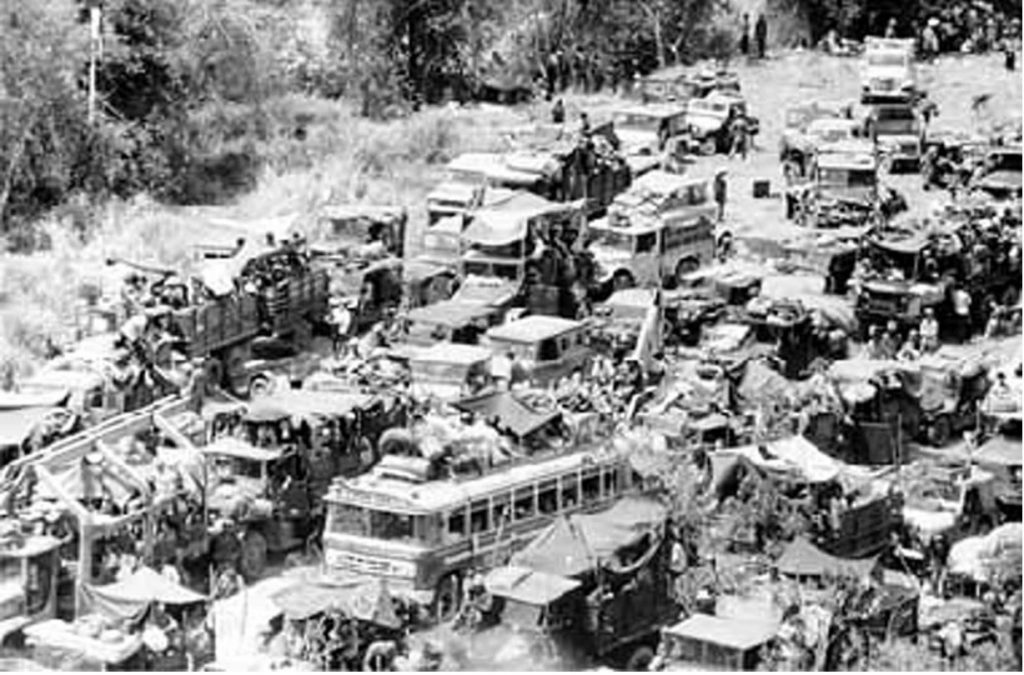
This turned out to be the main strategic invasion thrust by the NVA, which then led to the collapse of the central highlands region. The invasion continued from there and by April 30, Saigon and the entire country had fallen, and helicopters were airlifting people off the roof of the US Embassy.
It was sad, tragic, and for me personally, a strangely ironic final conclusion to the Vietnam War.
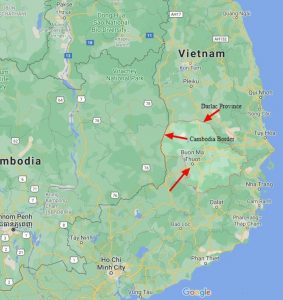
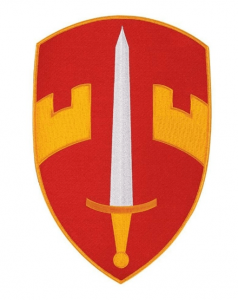
Thanks for the great story, Pat! A student of strategy, I’m intrigued by your revelation. One can only wonder if there’s another story behind this story, one which fully explains General Phu’s decisions. Turned into a book, it would make a heck of a best-seller. Good luck if you take up the challenge!
Don’t think I’m up for a book challenge! Military.wikia.org has a fairly detailed account of the Battle of Ban Me Thuot, and the subsequent downfall of South Vietnam. It goes into a little more detail on Phu’s actions and decision to ignore the intelligence. It makes for an interesting read. Thanks for the comments, Bill.
After California State Senator Janet Nguyen was forcibly removed from the senate floor while making remarks about the role of Tom Hayden during the Vietnam War, I sent her this note of support:
Senator Ngyuyen,
Many of us, like you, have not forgotten that Americans like Hayden and Ms. Fonda gave comfort to the enemy during the Vietnam War. More importantly we owe you and the Vietnamese people an abject apology.
Having secured a peace, and left South Vietnam, America failed to live up to the promises it made to the South Vietnamese government and people. The successful invasion by the North could have been stopped in its tracks if America had kept its promises. As an aside to the Paris peace accords, America promised to replace weapons and equipment – a bullet for a bullet – to supply POL and repair parts and ultimately to come to the South’s aid if attacked. A war-weary Democratic Congress unfunded those promises and a weak American President let it happen. Hundreds of thousands of your western-sympathizing countrymen died in re-education camps as a result. In my opinion that was America’s worst hour. I am ashamed of my country’s failure.
You are right to keep the memory of these events alive.
Sincerely,
Pete Grimm
USMA 1969
Great letter and well said, Pete!
When President Nixon took office in 1969 and replaced Westmoreland with GEN Abrams, the plan was for US ground forces to be withdrawn and the fighting and bleeding to be turned over to the little people themselves. By March 1972 our withdrawal had gone so far that there were more ROK troops in country than Americans, who were mostly aviation, logistics and advisors.
On 1 April, when all the bad guys in the world came out of the woodwork, as you described, the ARVN and the RF/PFs dug in and drove back the massive NVA country-wide assault. The little people fought and bled like hell, but they did everything we had asked them to do.
By 1972, WE HAD WON THAT WAR, as we had defined victory. It took feckless Congress to flush that victory down the drain.
Don’t ever let anyone say we lost the war in Vietnam. We won it, and then Congress gave it away.
— guy
Spot-on, excellent points, Guy!
Pat, as a C-1 classmate, the main reason I want to respond is to commend you on having such remarkable “story telling” ability combined with excellent memory and attention to detail. Also, I concur with your thoughts because I had almost the same experiences. I arrived about 6 months ahead of you and went to the 1st CAV in Bien Hoa. As a brand new CPT, I was assigned CO of an air assault rifle company, and at the time thought we were saving the world from communism!! We did daily patrols in our assigned AO, mostly searching for VC. It was not until I finished my tour, left the Army, and went to Grad School as you did, that I finally realized it was all a political game…and then, to remotely follow the final destruction and downfall of the poor south Vietnam people in 1975 was heartbreaking!
In fact, I purposely did not disclose to my TCU Grad school classmates, or even my future wife who I met at TCU, that I was a Vietnam vet. I was not proud of our politicians…and pretty much still feel the same today.
Thanks for the compliments, Gary!